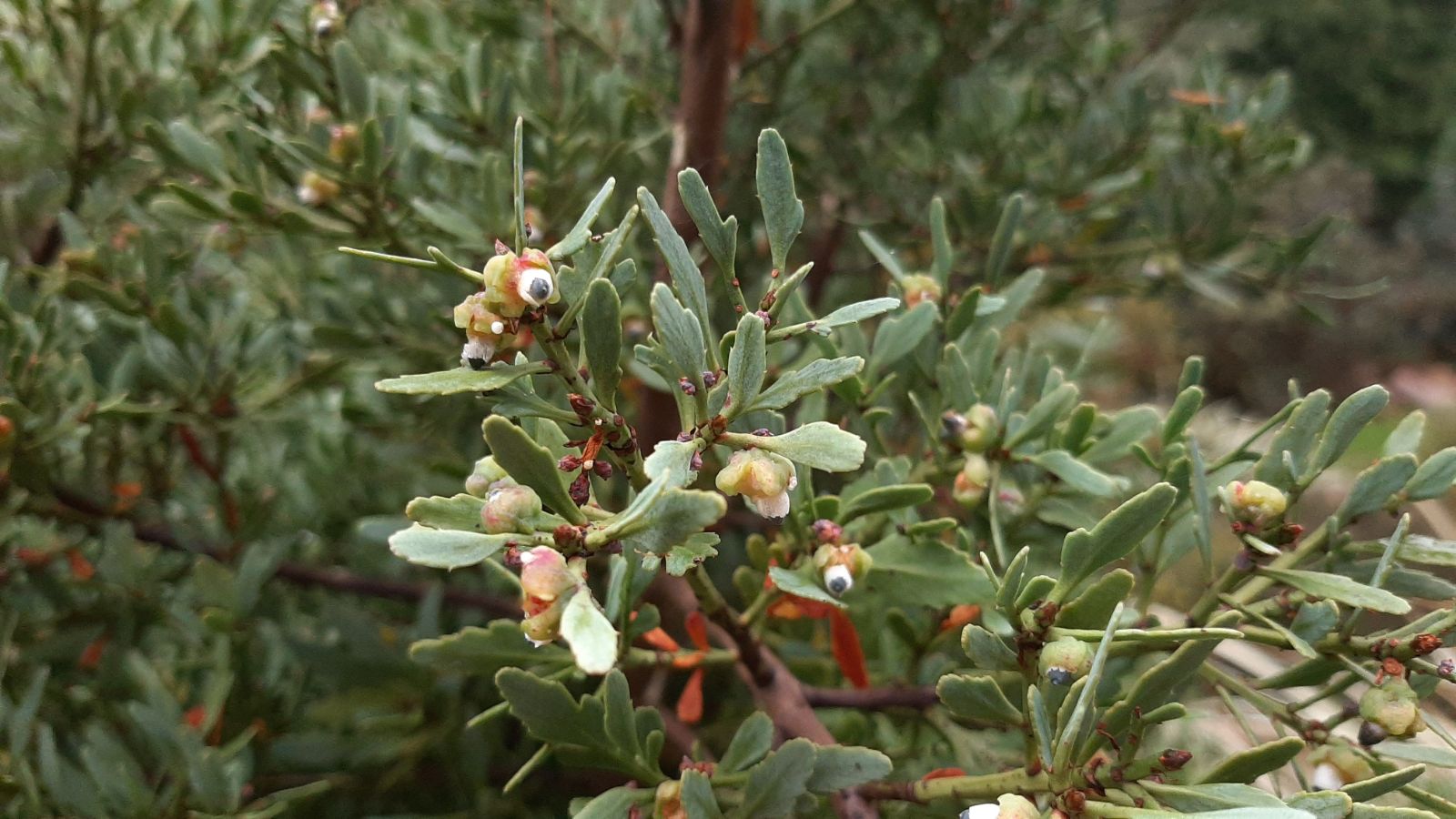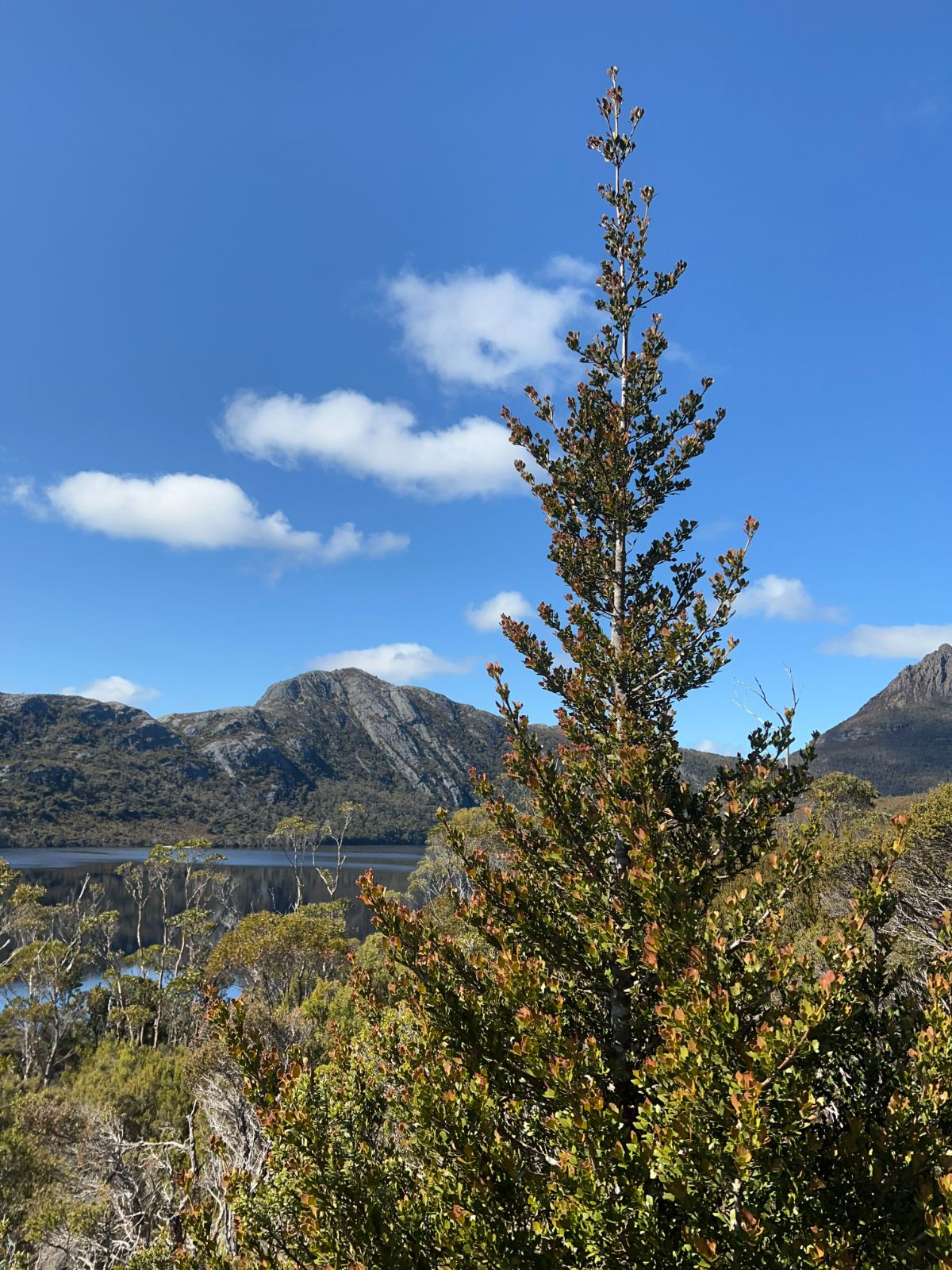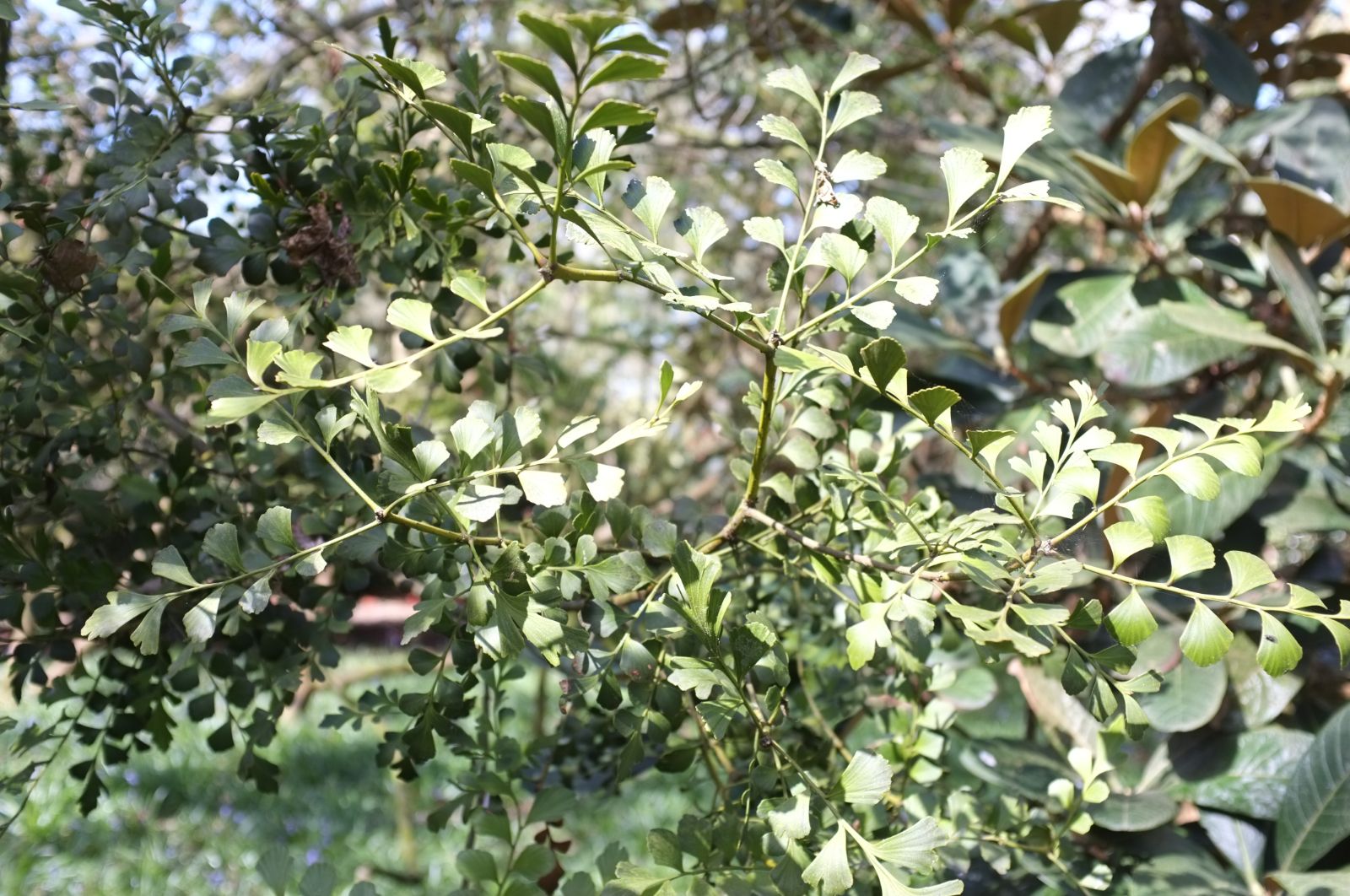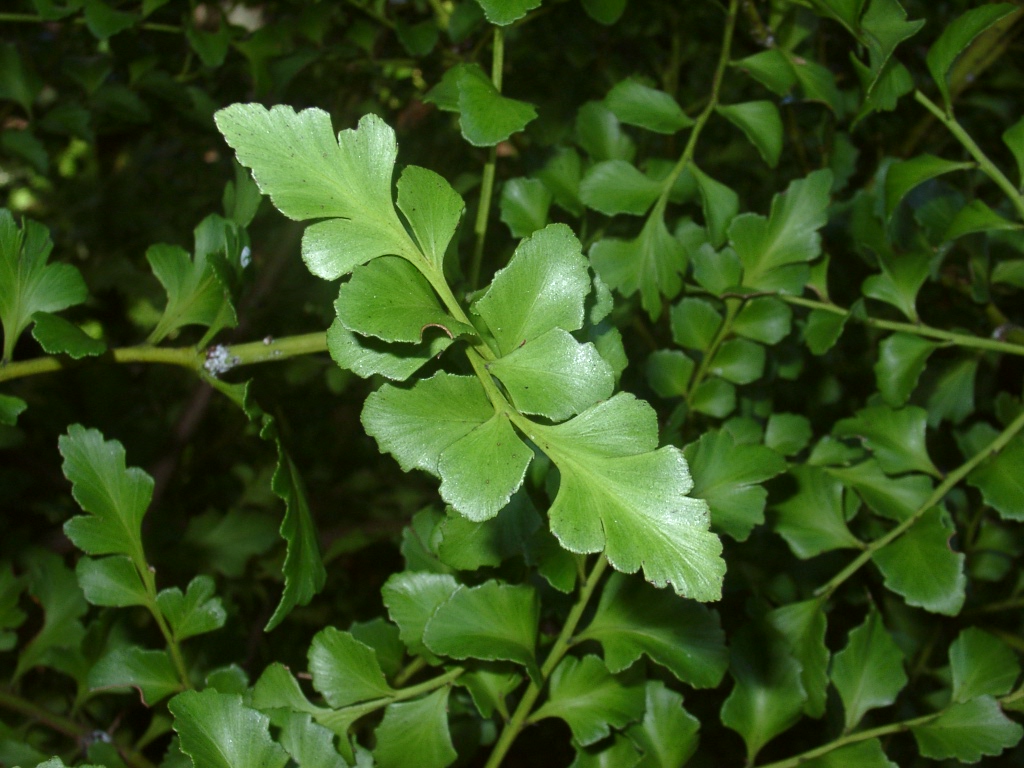Phyllocladus
Credits
Article from Bean's Trees and Shrubs Hardy in the British Isles
Recommended citation
'Phyllocladus' from the website Trees and Shrubs Online (treesandshrubsonline.
Family
- Podocarpaceae
This curious genus of trees and shrubs is related to Podocarpus, although they are very different in outward aspect. Of the species that are, or have been, in cultivation, one is native of Tasmania and three of New Zealand. Two tropical species grow in Borneo and the Philippine Islands. They are evergreen and are chiefly remarkable because the branchlets are flattened out to resemble leaves and perform the functions of leaves, after the fashion of several acacias and the butcher’s broom; they are known as phylloclades. The true leaves are small and linear or scale-like – scarcely noticeable except on young seedling plants. Flowers unisexual; both sexes occurring on one tree in some species, on separate trees in others.
The four species here described succeed in a good, open soil but need a copious rainfall and warmer conditions than our average climate affords. Propagation can be done by cuttings put in gentle heat in summer, but plants raised from imported seeds are preferable.
From the Supplement (Vol.V)
The genus is revised by H. Keng in Journal of the Arnold Arboretum, Vol. 59, pp. 249–73 (1978). The author proposes that it should be removed from Podocarpaceae to a new monotypic family – the Phyllocladaceae.




